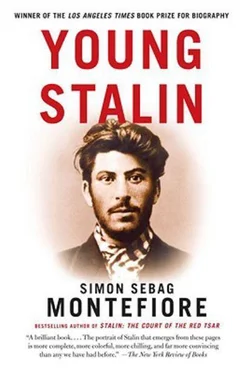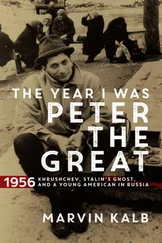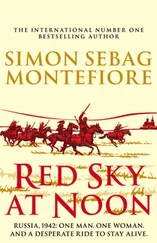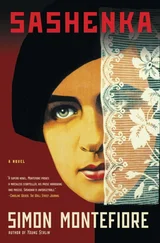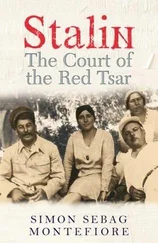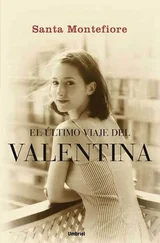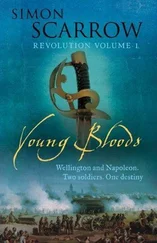1. Charkviani, “Memoirs.” Molotov Remembers , p. 212. Rayfield, Stalin and the Hangmen , pp. 8–10. Khrushchev Remembers , 1:305. Keke, Soso and Sasha Egnatashvili: RGASPI 558.11.1549.1–69. Svetlana quoted in Zhores Medvedev and Roy Medvedev, Unknown Stalin , p. 297. Historians will find out: Mgeladze, pp. 240–41.
2. Alliluyevs: Richardson, Long Shadow , pp. 73–75. Author’s interviews with Vladimir Alliluyev (Redens), Leonid Redens, Kira Alliluyeva, Moscow, 2001–3. Kamo and Fyodor: Mikoyan, Memoirs , pp. 431–33. See Montefiore for full family story.
3. Svanidzes: Kun, p. 6. See Montefiore for full story. RGASPI 558.1.5099, Stalin to M. Monoselidze. GF IML 8.2.1.50.239–55, Dzhavaira Khutulashvili. Author’s interviews with K. Gelovani and M. Svanidze, Tbilisi, 2005.
4. Women; Slavatinskaya: RGASPI 124.1.1782; Trifonov, Otblesk kostra , pp. 33–40. Kun, pp. 41 and 46. Marcou, p. 76. Petrovskaya: Ilizarov, p. 288; and possible case against a Sofia Petrovskaya in A. L. Litvin, Genrikh Yagoda Narkom , Kazan 1997, p. 197—it is not clear if this is the same Petrovskaya and in any case her destiny is unknown. Onufrieva: Kun, p. 116. On Stal and Slavatinskaya: Chuev, Kaganovich , p. 219. RGASPI 558.4.647, P. Onufrieva-Fomina. RGASPI 558.4.647, Tatiana Sukhova.
5. RGASPI 558.4.662, L. P. Pereprygina-Davydova and F. A. Taraseev. RGASPI 558.4.667, M. A. Merzliakov. RGASPI 558.1.5169. Kolesnik, Khronika zhizni semia Stalina , pp. 58–62. Sukhotin, “Bastard krasnogo vozhdia.” Rokhlin, “Gde pryatali nesakonnorojdennogo syna Stalina?” Ivan Serov memo to Politburo: RGASPI 558.11.1288. Izvestiya , 8 Dec. 2000. Antonov-Ovseenko, Stalin bez maski , pp. 380–90. Pereprygin household, first Laletin sabre incident: Chernenko, I. V. Stalin v sibirskoy ssylke , pp. 140–49. Vstrechi s vozhdem , pp. 21–25. Ilizarov, pp. 288–92, 300–15. Lidia in love: http://memorial.krsk.ru/Work/Konkurs/4/Panteon_stalina/00.htm. Kun, pp. 169–75. Svetlana Alliluyeva, Only One Year , pp. 381–82. Volkogonov, Stalin , p. 8. Essad Bey, p. 191. Mark Franchetti, “Stalin’s Secret Son by Girl 14,” Sunday Times (London), March 2001.
6. Keke, Soso and Sasha Egnatashvili: RGASPI 558.11.1549.1–69. (45.1.1549). Medvedev and Medvedev, Unknown Stalin , p. 297. Beria, pp. 20–21.
7. Money to Kapanadze: RGASPI 558.1.5978 and 5080. Iremashvili, pp. 36, 59–61 and 77. Davrichewy, pp. 36,244 and 160. Letter to author from Iralki de Davrichewy 23 Aug. 2006. For Mata Hari and Marthe Richard stories, see Francis Lacassin, “Mata Hari ou la romance interrompue,” Magazine Littéraire , no. 43, Aug. 1970. Davrichewy, “Je suis le demifrère de Staline,” pp. 25–30.
8. Kamo: Russian Review , vol. 19, no. 3, July 1960, pp. 227–47. Kamo and Lenin: Ulam, Lenin and the Bolsheviks , p. 723.
9. Author’s interview with Alexander Egnatashvili’s grandson Guram Ratishvili, Tbilisi 2005. Kun, pp. 6–7. Loginov, p. 14. GARF 7523.107.127.1–6, General N. Vlasik interrogation. Roman Brackman, Israel at Noon (New York, 2006), p. 5. Putin grandfather, see Montefiore, Court of the Red Tsar , p. 293 (U.S. paperback).
10. Old Bolsheviks, Ordzhonikidze, Molotov, etc.: see Montefiore. Sergo versus Molo tov fight: Molotov Remembers , p. 113. Terror Deaths: 1937–38, see Service, History of Twentieth-Century Russia , p. 222. Georgian terror statistics: Amy Knight, Beria, pp. 79–84. Author’s interview with Izolda Mdivani (widow of Budu’s son Vahtang) and Mdivani family in Tbilisi, Georgia, 2006. Vyshinsky: Vaksberg, Stalin’s Prosecutor , pp. 13–37.
11. Stalin stops publication: RGASPI 45.1.803.1, 558.11.730, 558.11.787, 558.11.1496, 558.11.730, 558.11.787.2.
12. Dinners in old age: Charkviani, “Memoirs.” Megalomaniacs: “Provisional Revolutionary Government and Social Democracy,” Proletariatis Brdzola , 15 Aug. 1905: Stalin, Works , 1:140–61. 20–25 million deaths: A. N. Yakovlev, A Century of Violence in Soviet Russia (New Haven, 2000), p. 234.
In 1903, the Russian Social-Democratic Workers Party, founded in 1898, split into two factions, the Bolsheviks under Lenin and the Mensheviks under Martov, who fought one another but remained part of the same party until 1912 when they formally divided, never to reunite. Lenin organized and led a secret three-man cabal called the Bolshevik Centre to raise money using bank robbery and organized crime rackets.
The distances in this urban village are tiny. The seminary, Stalin’s family home, the Viceroy’s Palace and the bank are all about two minutes’ walk from the site of the bank robbery. Most of the buildings in Yerevan (later Beria, then Lenin, now Freedom) Square that feature here remain standing: the Tilipuchuri Tavern (now empty of any princes or brigands), the seminary (now a museum), the City Hall, the HQ of the Caucasus Command, the State Bank and the Viceroy’s Palace (where Stalin’s mother lived for so long) are all unchanged. The Caravanserai, Pushkin Gardens, Adelkhanov Shoe Warehouse (where Stalin had worked) and the bazaars are gone.
Stalin would not have thanked the Svanidzes for their frankness. They were close family for thirty years. His sister-in-law Sashiko, who left this memoir in 1934, died of cancer in 1936—or she might have shared the fate of her sister Mariko, her brother Alyosha and his wife. Sashiko Svanidze’s memoirs are used here for the first time. Some of the bank robbers, such as Kamo, Bachua Kupriashvili and Alexandra Darakhvelidze, left unpublished, if incomplete, memoirs, also used here for the first time.
The popular cafés of the day.
In the 1920s, before he was dictator, Stalin went to remarkable lengths to conceal his role in the expropriations. In 1923–24, his chief gangster, Kote Tsintsadze, by then in opposition to Stalin, published his memoirs in a small Georgian journal. They were republished in 1927 but afterwards the pages involving Stalin’s part in assassinations and robberies were removed, a process continuing in the 1930s under Beria. Today, they are extremely hard to find.
The memoirs have lain in the Georgian Communist Party archive, forgotten for seventy years. They were never used in the Stalinist cult. It seems Stalin neither read them nor knew they existed because, as far as this author can learn, they were not sent to Stalin’s Moscow archives. He did not want his mother’s views published. When Keke was interviewed Hello! magazine style in 1935 in the Soviet press, Stalin furiously reprimanded the Politburo: “I ask you to forbid the Philistine riffraff that has penetrated our press from publishing any more ‘interviews’ with my mother and all other crass publicity. I ask you to spare me from the importunate sensationalism of these scoundrels!” Keke, always strong-willed and unimpressed with her son’s power, must have recorded them secretly and in defiance of him on 23–27 August 1935, shortly before her death.
Читать дальше
